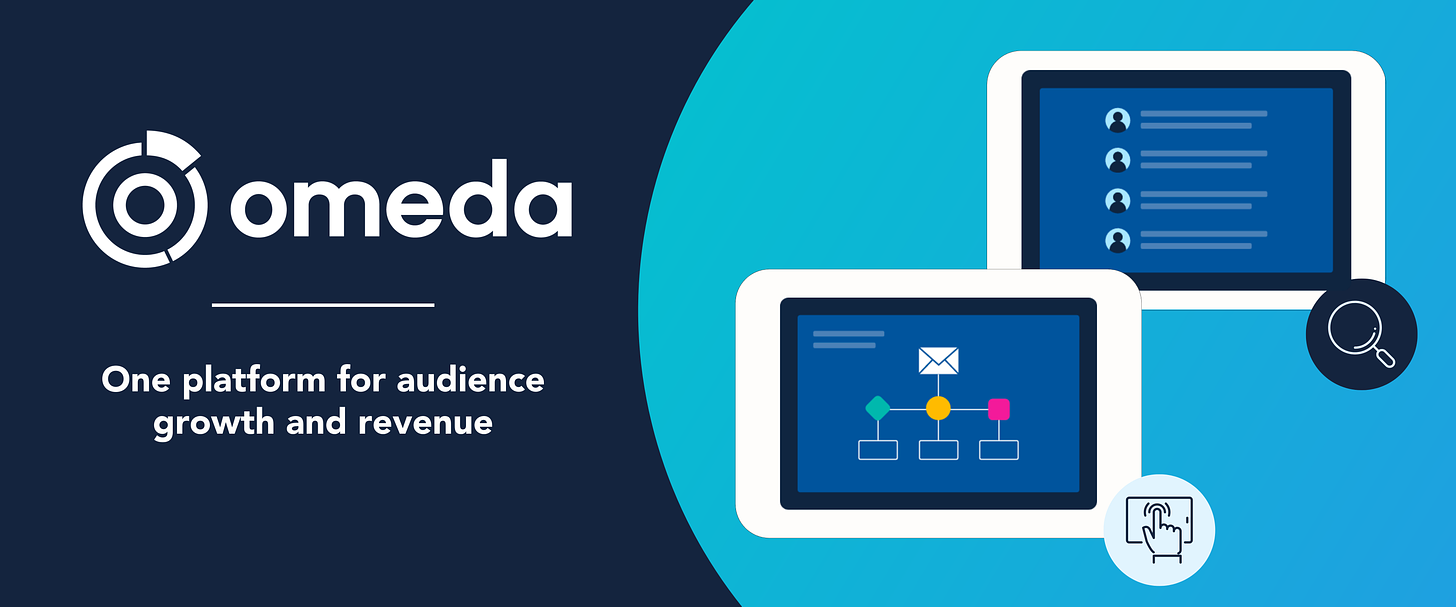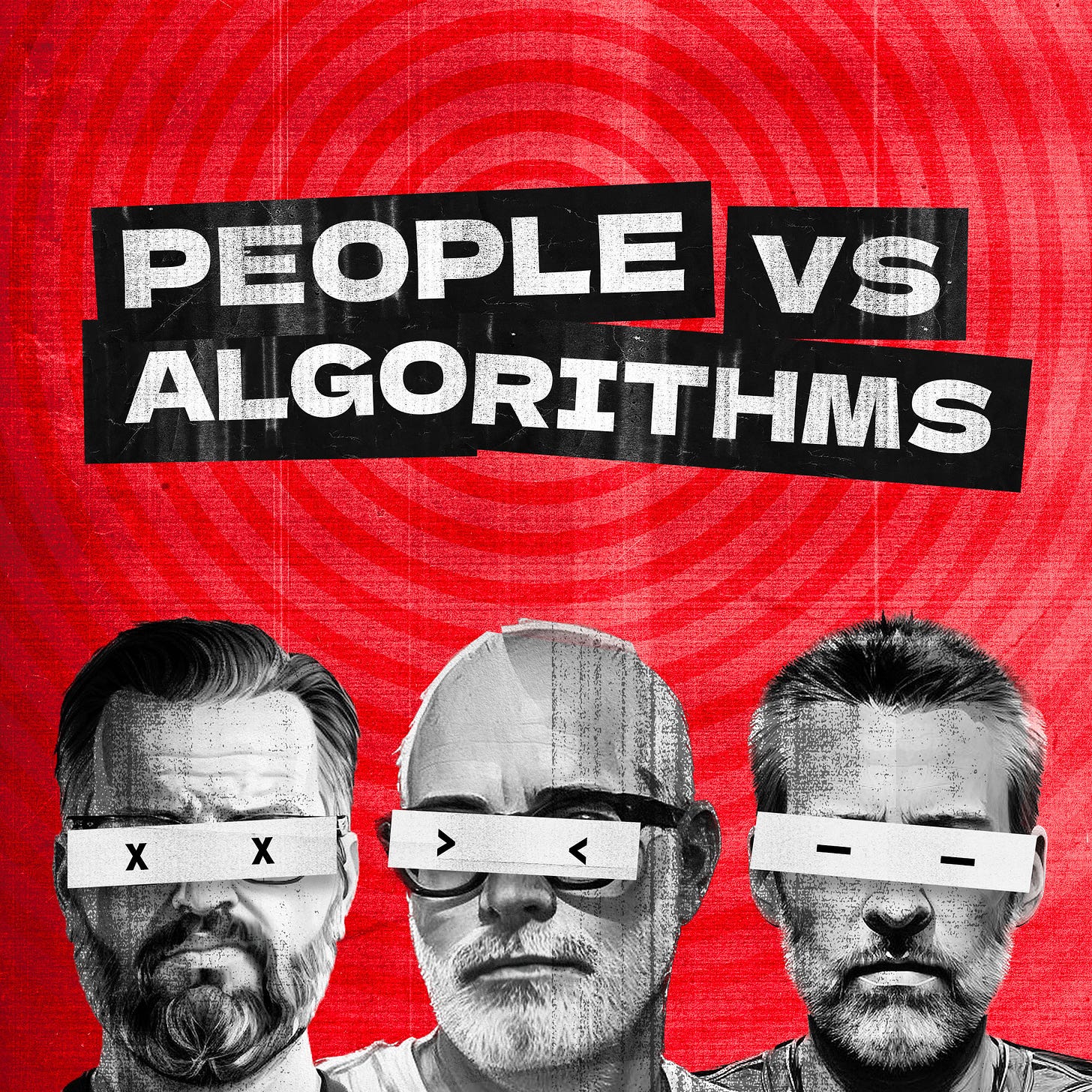One of the things I like best about newsletters is they’re conversational. I find the best are explorations rather than explanations. Nobody has all the answers. On that note, I always like to hear from people, so send me a note with feedback by hitting reply or emailing me at brian@therebooting.com. Also, check out Notes, where I’ve taken to sharing more of the raw material and discussing the issues that end up forming the basis of these newsletters.
This week, I’m trying something a bit new by writing on the topic of this week’s People vs Algorithms podcast – friction – as a companion to what Troy Young already published in his newsletter yesterday. Be sure to check out Troy’s piece and the People vs Algorithms podcast, where Troy, Alex and I explore patterns in media, tech and culture. Also, on The Rebooting Show, I spoke to Bullish Studios CEO Brian Hanly about building media brands from memes, and an announcement about The Rebooting on the Riviera.
The power of audience relationship management
It’s critical for all publishers to know their audience, but how can you do that when your audience data is split across 10-plus different tools and databases?
That’s where Omeda comes in. Omeda is an end-to-end audience management platform that helps media companies engage their audiences and monetize their content by using their data more effectively. They do this by combining a CDP, email and marketing automation, and subscription management into one streamlined solution.
Manage, activate, and generate revenue from your audience — all from one place.
In praise of friction
Nobody likes friction, at least in the moment. It stands in the way of accomplishing a task, and modern life in many ways has been an exercise in applying technology to remove friction from everyday processes. Consider the founding myths of tech companies. Uber was supposedly born from the frustration Travis Kalanick and Garrett Camp had trying to hail a cab in Paris during the LeWeb conference in 2009. Anybody who was regularly upstreamed while trying to get a pre-Uber cab in New York City late at night can relate.
Social media was about removing friction from human connectivity. Facebook was also rooted in solving for friction. Going to college before social networking meant getting a directory of student, known in some places as a “face book,” and used by students to look up each other (and those they want to meet). With an online directory, all that friction would be eliminated as students could easily connect immediately. Instagram removed the friction of both taking good photos thanks to filters and crucially being able to share them with friends and others.
Tech ruthlessly hunts down friction to eliminate it. The gospel of frictionless experiences is preached by Silicon Valley’s priest caste of product managers, ruthlessly hitting their OKRs by A/B testing and then optimizing their way to a friction-free nirvana. Jeff Bezos declared, “Your margin is my opportunity,” but he really meant your friction. All well and good, only some friction is necessary in the real world and even preferable in the long run because life is complex and optimizing small details ad infinitum can cause people to lose sight of the essential question: What are we trying to do here? As Michael Lee Robinson literally noted, “We should remember another name for unchecked growth is cancer.”
The frictionless life is also a boring life. The essential problem with replacing strategy with optimizing away friction is you lose uniqueness. Many data sets look alike, so you will end up optimizing your way into sameness. There’s a reason everything tends to look alike and gravitate to the average. The over-optimized life of the productivity goons strikes some of us as a ghastly and soulless existence. Everyone needs “ideation time.”
Introducing friction can be done to serve a strategic purpose. In my early days at Digiday, we stuck with a daily publishing schedule, only putting out new stories at midnight. This was intentional friction to force differentiation in our product. Instead of chasing RTs and regurgitating the same trending topic as many other places, we’d use the friction of holding stories to make sure they found a differentiated angle. Even now, I introduce unnecessary friction to the writing process in order to force a better result.
As Troy points out in his post, friction is integral to the media product. It is imprinted in the DNA of media because it has served an essential function in media business models. Scarcity is sacrosanct in media, acting as essential friction by limiting the choices available to people. Tech people hate ads because they are, by definition, friction. TV gravitated to commercial breaks as a way to hijack attention. Those of us who grew up with rabbit ears and a handful of channels – the UHF ones were fuzzy – simply accepted the friction as normal. Naturally tech came to the rescue with TiVo.
Truth be told, there has long been too much friction in media businesses, not just in delivery but in the service of making as much money as possible. Adding more ads doesn’t have much immediate cost. Anyone operating a subscription business knows that addressing churn starts with friction to the cancellation process, no matter the long term impact of pissing those people off forever. The lucrative SEO practices of publishers is under threat from ChatGPT and the like because it is often unnecessary friction.
The remove-friction playbook is unlikely to be sufficient with AI, not with the doomsday scenarios in the ether. There will inevitably be friction introduced to its development, the same as societies do for the development of pharmaceuticals, financial services products and energy. AI will officially close the chapter of the move-fast-and-break-things ethos. Too much stuff has already been broken. Introducing friction to slow things down is a perfectly acceptable choice. Speed bumps inconvenience drivers, but they create a safer environment for pedestrians.
The better framework is likely around alignment, which recognizes that in a grown-up world some friction is inevitable. AI isn’t inevitable. It is a set of choices made by humans, and it needs to be deployed for the betterment of humanity, not in some nihilistic attempt to see what is possible. By the same token, the next chapter of publishing will be about aligning the interests of different constituencies, starting with the audience itself. That’s a better framework for making the inevitable tradeoffs that exist in real life.
Check out the conversation Troy, Alex and I have about friction in this week’s episode of People vs Algorithms. The episode will go live on Thursday morning.
In part 2 of my Q&A with LiveIntent CEO Matt Keiser, we discussed something I’ve long held: Email is almost too effective. Check out part 1 here.
BM: Something I’ve always said about email is it’s almost too effective. The data always says send. So I always wonder if email’s performance will fade as people become inundated with email.
MK: The data always says send because email is always the biggest driver of ROAS, but the idea of “inundation” is misleading. Instead, when Publishers invest in intelligent email methodology, they can lean into engaged audiences while nurturing the less engaged ones.
We see too many publishers using a one-size-fits-all approach to mailing. LiveIntent’s data science team has determined that, for most publishers, ~10% of lists create ~90% of the engagement with their emails. Yet, many Publishers cater not to their power users, but to their least engaged users.
Publishers should obviously not offend the least engaged customers, but they shouldn’t upend the apple cart to appeal to them. Publishers should segment and treat their different audiences differently.
We see publishers make twice as much by mailing their engaged customers more often, and mailing their less-engaged customers less frequently, and still end up sending about the same amount of email. It’s just a matter of paying close attention and changing up the mix.
The Rebooting in Cannes
I’m excited to announce a partnership with Kerv for the upcoming Cannes Lions. Kerv will be the underwriting sponsor of a daily edition of The Rebooting newsletter and The Rebooting Show podcast. We are collaborating on three days of conversations around the theme of “The Active Attention Economy” at The Kerv Cafe in Cannes, from June 19-21. If you are interested in learning more about this program and other activities we’re doing in Cannes – I’m working on putting together a drinks gathering and dinner – please submit your information here to receive updates. Hope to see many of you in your linen on the Croisette.
Making media from memes
On The Rebooting Show, I spoke to Brian Hanly, CEO of Bullish Studio. Bullish is creating media brands from memes, working with a stable of finance meme accounts in particular to build media properties. I got to know Brian over the pandemic, and quickly became fascinated by Bullish’s business. No doubt much of the fintech media segment was helped along by ZIRP and crypto craziness, but the use of memes as the starting point for lightweight media businesses is a good template as we enter into what’s sure to be another crazy cycle for the media business.
Thanks to Omeda and LiveIntent for sponsoring this edition. If you’re looking to reach 15,300 publishing professionals, you should consider sponsoring The Rebooting to showcase your expertise in finding paths forward for building sustainable media businesses. Check out the sales kit and get in touch: brian@therebooting.com.







it's weird, I 'restack' the thing and now I wonder: should I also comment right here? 🤷♂️ 😉
I work in content and I’m always surprised at the power of email over all other channels, too.
But I’ve been wondering how AI will effect email. With Google releasing Bard or w/e later this year across their suite, having AI assisted email organization may lead to some wild times. Have you noticed any early signs about email and AI?